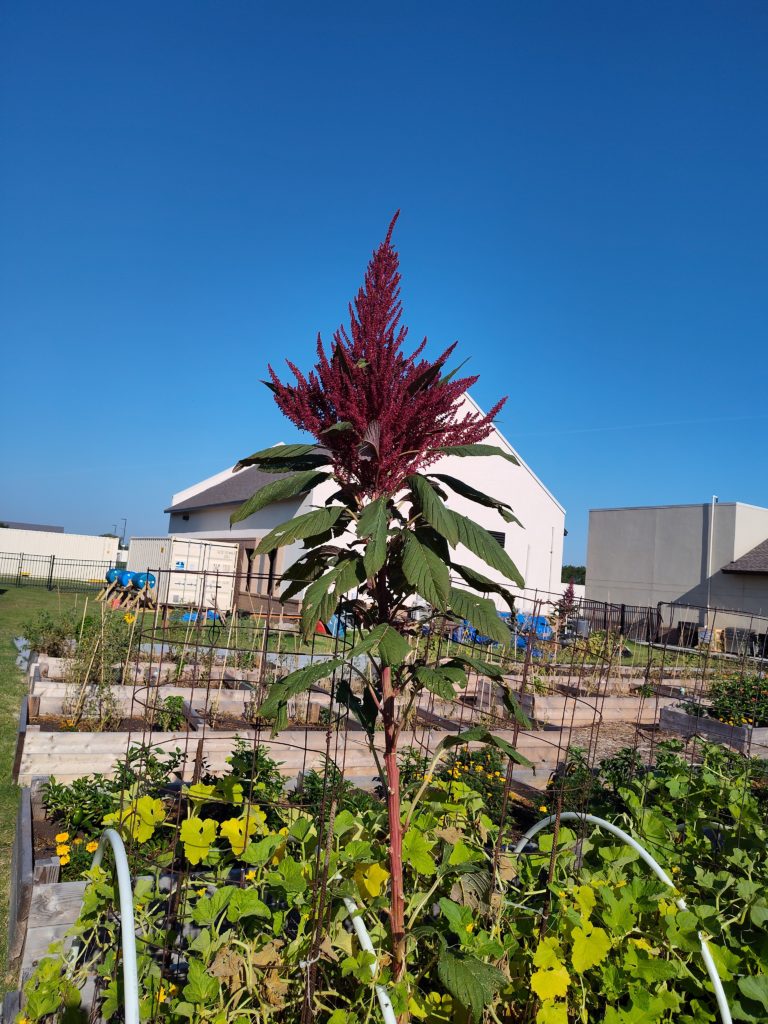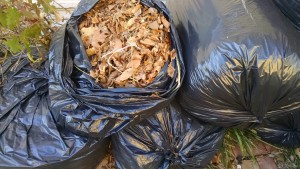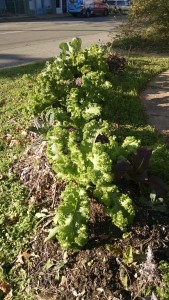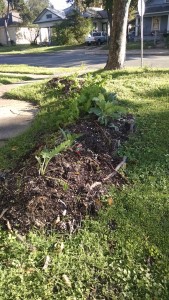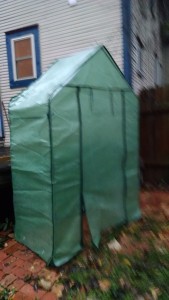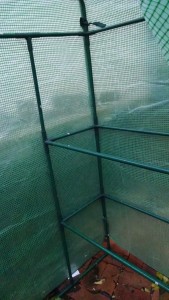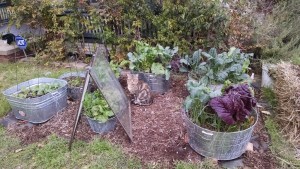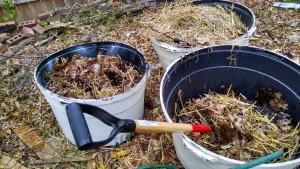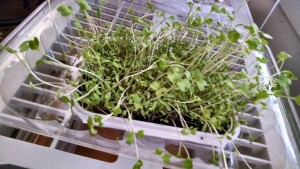During the cold days the plants may be dormant, but we can’t be. Too much to do – planning, mostly. When I was by the community garden on Saturday, the giant red mustard was indeed giant – about 18″-24″ leaves. I’d cut a few leaves from the outside about 10 days before, and it just stimulated the plant to make more leaves. Yum. The taste is a bit sharper than green mustard, but the greens I cooked last night were scrumptious, when mixed with chard that I also harvested.
In my container garden, however, the mustard is not growing quite so large. Note to self – don’t plant so many things in one container! Evenso, the mustard leaves in the container are at least 12″ when planted with broccoli and chard. As shown in the picture.

So how do I cook greens (all types)? With garlic and olive oil. I sautee the minced garlic in olive oil in a thick-bottomed sauce pan till it’s soft, then start adding the chopped greens, making sure they are olive oil’d before adding another bunch. Then I add about ½” of water in the pan, and slap on a lid, turning the fire down low. Let them cook about 10-15 minutes, till done. I served with beans and cornbread last night, but greens alone (maybe with some pepper sauce!) or with poached egg are good. Both tasting good and good for your body.
So after all that, I’ve resolved to order more giant red mustard seeds and plant some more while it’s still cold. I order mine from Southern Exposure Seed Exchange (see last week’s post for more information on this excellent source of non-GMO seeds).

The community garden’s spinach is doing well. We planted in mid-November, alternating rows of spinach and carrots (I’m partial to the red-cored chantenay). Both are about 4-5” high and the spinach was so thick, we thinned to 4” apart, picking the largest plants to leave room for the smaller ones to grow larger. In about a month, we can start harvesting the carrots – they are already baby-sized and (I tasted one) so sweet. Something to look forward to.
On another note, I visited family over the holidays, and was discussing gardening with a relative. We looked out the sliding glass doors (okay, it was just too COLD to go out and look closely), and I saw barren beds, with dry dusty dirt exposed. I looked at the barren trees in the yard and asked what happened to the leaves. The yard man blows them together and bags them and hauls them off. I restrained myself – leaves are the BEST mulch for wintering barren beds. They preserve and nurture all those soil micro-organisms that are crucial to a plant’s well-being. And they hold moisture in the ground so that what plants are left (like shrubs) are protected from the cold. Since the relative had cardboard in her garage, I suggested that she put it out as mulch and wet it down good. Take a deep breath.
Now for my rant: don’t let those leaves go into the landfill! They are so valuable for your plants during the winter as well as your lawn. If nothing else, put them on the compost pile. That’s how to return the nutrients to the soil. That’s how nature does it and replenishes soils year after year – think about a forest floor, that is soft and moist and alive and rich. That’s how all our growing beds should be.
